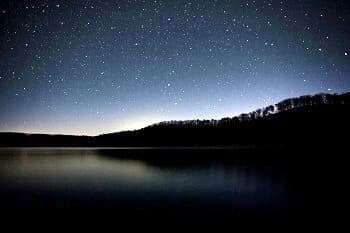 Clear your mind. Imagine that you’re approaching the Gospel of Luke with fresh eyes. Today’s gospel selection begins with the fifth line of the first chapter of Luke, but rewind a bit. Start at the beginning:
Clear your mind. Imagine that you’re approaching the Gospel of Luke with fresh eyes. Today’s gospel selection begins with the fifth line of the first chapter of Luke, but rewind a bit. Start at the beginning:
“Since many have undertaken to compile a narrative of the events that have been fulfilled among us, just as those who were eyewitnesses from the beginning and ministers of the word have handed them down to us, I too have decided, after investigating everything accurately anew, to write it down in an orderly sequence for you, most excellent Theophilus, so that you may realize the certainty of the teachings you have received.”
Now, I’m sure we know that the various Gospels were all intended to deliver the truth, message, and promises of Jesus. But, looking at Luke as if it was the first time you’ve heard this, you wouldn’t know that . . . not for a while. Instead, we initially learn crucial background information about the announcement of the birth of John the Baptist. We get an angelic visitation and information of his miraculous conception, paralleling Christ’s story that is the focal point of the Christmas season. Jesus isn’t even mentioned in Luke until verse 31 — the latest first mention of all the Gospels.
So, what’s the point of our Gospel backstory today, especially during this time of Advent?
Obviously understanding John’s story puts one of our Sacraments — baptism — into perspective and context. Looking beyond that, it’s also important for putting the pieces together as far as God’s plan. Why is baptism important? Because it washes away original sin, which has haunted humanity since shortly after creation, when humanity fell. That fall came about because of human’s original disobedience of God’s plan.
Now, folks may say that the arrival of Jesus is the culmination of God’s plan to turn that original act of disobedience into a plan of ultimate salvation for the world. But that’s not quite correct.
Rather, the birth of Jesus is the beginning of that culmination, leading to his life, ministry, death on the cross, and resurrection . . . which, itself, is still not the full picture. The arrival of the Holy Spirit, the story of the Church and its growth, the stories of the saints and how we as Christians have worked toward bringing the Kingdom of Heaven here on Earth — these are all part of the ongoing story. And it ends with the return of Jesus on the final judgment day whose time or circumstances we cannot predict.
One of the troubles I have with much of the modern world’s view of Christmas is that I don’t get a sense of that bigger picture. At worst, the birth of Christ is treated as a secular tribute to commercialism. But even many who do keep Jesus in their hearts get swept up in the idea that Christmas is a standalone event, devoid of context. Yes, “peace on Earth and good will toward men” is a great and important concept, but there’s still even more to the story.
In our lives, an invitation to a baby shower isn’t the full story. The baby shower isn’t the full story. Even the birth itself isn’t the full story; when the revelers get done cooing over the baby and congratulating mom, there’s still a long road facing the parents and child. So, too, is the birth of Jesus part of a larger story, and the more we immerse ourselves in the totality of that story, the closer we may get to God.
This isn’t to discourage you from enjoying the season! It’s a wonderful, miraculous time of year. But when you’re reflecting on the mysteries of how our all-powerful God humbled himself by being born as an infant, maybe take a moment to put that wondrous moment into the larger context . . . including moments like today, when we reflect on John the Baptist in the womb. The importance of Jesus’ life didn’t end with his birth; in the same way, the totality of God’s story of salvation doesn’t end with a manger and magi.
Today’s readings: Jgs 13:2-7,24-25A; Ps 71:3-6AB,16-17; Lk 1:5-25
